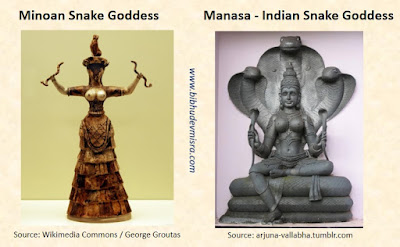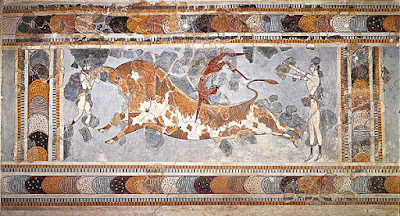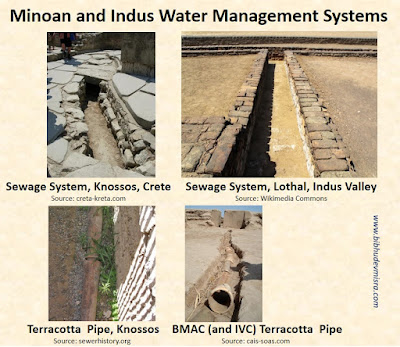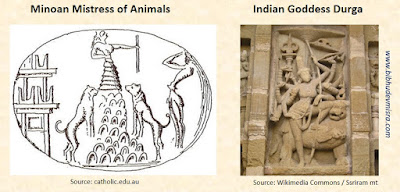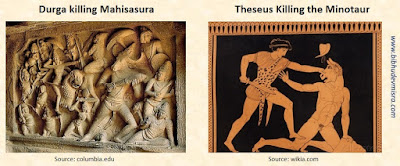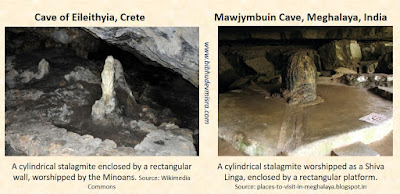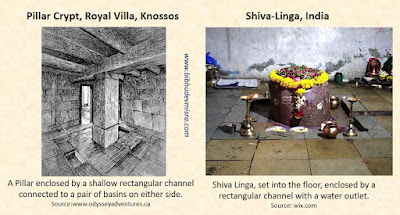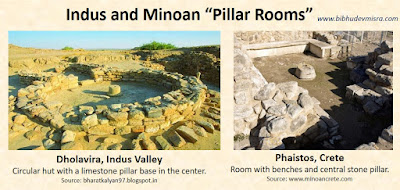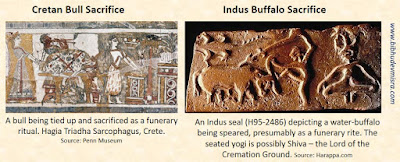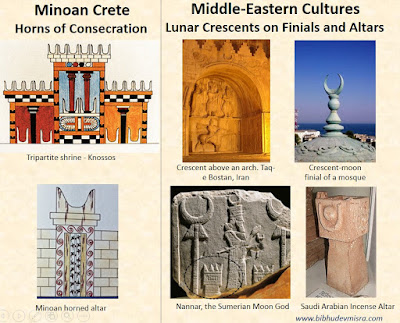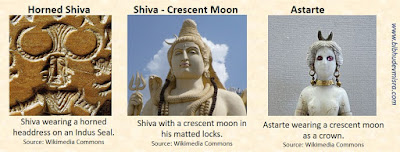Azzurro
Banned
- Messages
- 450
- Reaction score
- 117
- Points
- 0
- Ethnic group
- Italian
- Y-DNA haplogroup
- J-Y15222
- mtDNA haplogroup
- U5a2b5
The Kura Araxes culture was from 3400-2000 BC, looking at Yfull and noticing several bottlenecks, certain lineages seem to expand during the Kura Araxes expansion, the majority are J2a, followed by J1, G and T.
For the J2a lineages there is 8 that fit the expansion, 3 are under the J-Z7671, as J-Y3612, J-Y3620 and J-Y32720, they expand roughly around 4200 ybp and move in a Northwards direction, where it peaks in the Caucasus today and is prevalent amongst Nakh speakers. Then there is J-YP879 under J-FGC15905 which expands around 4400 ybp and is more widespread, its most common amongst Armenians and Anatolian Greeks, has a decent frequency in Southern Italy, and is found at lower frequencies throughout the Mediterranean. Then there is J-Y5009 under J-M319 and J-L210 under J-Z467 which both had large bottlenecks of 5500 years and 7100 years which start to significantly expand during the Kura Araxes expansion, with both having earlier splits in the Levant (Syria, Lebanon and Israel) and Crete. Its possible that J-CTS3261 under J-Z7671 and J-L556 under J-CTS2906 could have been part of the same expansion as J-L210 and J-M319, as J-CTS3261 is found Samaritans and J-L556 is the largest J2a Jewish lineage. Lastly J-Z6254 under J-Z515 and J-Y17494 under J-Z387 these do not have a severe bottleneck and I think it could have originally been a Maykop lineage that possibly got absorbed by the Kura-Araxes Culture and expanded heavily under them as their expansion dates fit with the Kura-Araxes expansion.
For the J1 lineages J-B234 under J-Z1842 which suffered a smaller bottleneck from 8100 ybp to 6500 ybp, the J-B234 lineage expands around 4200 ybp similar to the J-Z7671 lineages, the same occurs for J1-CTS1460 lineages which expand mostly around 4300 ybp and are more widespread around the Mediterranean world, the same is true for J-BY100 lineages.
For the G lineages G-Z7958 which expands around 4500 ybp, though this line could also have been a Hattic lineage instead, the lineage with stronger evidence is G-Z17887 under G-M406 and this more off its modern distribution. The next lineages I would like to personally thank Maciamo for helping me with, which are G-Z17775 under G-L293 which has an earlier TMRCA than the Kura Araxes Expansion but is found in the Mediterranean world (Calabria, Southern Italy). Another two lineages of G-M406 also are good candidates G-PF3293 and G-FGC5089 which are widespread throughout the Mediterranean world as well, in countries such as Turkey, Greece, Lebanon and Italy.
For the T lineage T-P77 being a major lineage coming out of the Kura-Araxes expansion, as most of its lineages expand during the height of the Kura-Araxes culture, seeing that it also found in good frequencies in the Arab world its possible that some T-P77 lineages expanded to Iran and Mesopotamia and got redistributed, while other T-P77 lineages probably expanded westwards.
The Kura Araxes Expansion would have happened a little after the Uruk Expansion which brought J1-P58 lineages, J2b-M205 lineages, J2a-F3133 lineages, J2a-PF5087 lineages, J2a-PF5172 lineages, J2a-PF5174 lineages, T-L208 lineages and T-CTS11451 lineages
For the J2a lineages there is 8 that fit the expansion, 3 are under the J-Z7671, as J-Y3612, J-Y3620 and J-Y32720, they expand roughly around 4200 ybp and move in a Northwards direction, where it peaks in the Caucasus today and is prevalent amongst Nakh speakers. Then there is J-YP879 under J-FGC15905 which expands around 4400 ybp and is more widespread, its most common amongst Armenians and Anatolian Greeks, has a decent frequency in Southern Italy, and is found at lower frequencies throughout the Mediterranean. Then there is J-Y5009 under J-M319 and J-L210 under J-Z467 which both had large bottlenecks of 5500 years and 7100 years which start to significantly expand during the Kura Araxes expansion, with both having earlier splits in the Levant (Syria, Lebanon and Israel) and Crete. Its possible that J-CTS3261 under J-Z7671 and J-L556 under J-CTS2906 could have been part of the same expansion as J-L210 and J-M319, as J-CTS3261 is found Samaritans and J-L556 is the largest J2a Jewish lineage. Lastly J-Z6254 under J-Z515 and J-Y17494 under J-Z387 these do not have a severe bottleneck and I think it could have originally been a Maykop lineage that possibly got absorbed by the Kura-Araxes Culture and expanded heavily under them as their expansion dates fit with the Kura-Araxes expansion.
For the J1 lineages J-B234 under J-Z1842 which suffered a smaller bottleneck from 8100 ybp to 6500 ybp, the J-B234 lineage expands around 4200 ybp similar to the J-Z7671 lineages, the same occurs for J1-CTS1460 lineages which expand mostly around 4300 ybp and are more widespread around the Mediterranean world, the same is true for J-BY100 lineages.
For the G lineages G-Z7958 which expands around 4500 ybp, though this line could also have been a Hattic lineage instead, the lineage with stronger evidence is G-Z17887 under G-M406 and this more off its modern distribution. The next lineages I would like to personally thank Maciamo for helping me with, which are G-Z17775 under G-L293 which has an earlier TMRCA than the Kura Araxes Expansion but is found in the Mediterranean world (Calabria, Southern Italy). Another two lineages of G-M406 also are good candidates G-PF3293 and G-FGC5089 which are widespread throughout the Mediterranean world as well, in countries such as Turkey, Greece, Lebanon and Italy.
For the T lineage T-P77 being a major lineage coming out of the Kura-Araxes expansion, as most of its lineages expand during the height of the Kura-Araxes culture, seeing that it also found in good frequencies in the Arab world its possible that some T-P77 lineages expanded to Iran and Mesopotamia and got redistributed, while other T-P77 lineages probably expanded westwards.
The Kura Araxes Expansion would have happened a little after the Uruk Expansion which brought J1-P58 lineages, J2b-M205 lineages, J2a-F3133 lineages, J2a-PF5087 lineages, J2a-PF5172 lineages, J2a-PF5174 lineages, T-L208 lineages and T-CTS11451 lineages





